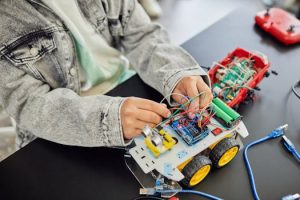Personalized Learning Plans: One Size Doesn’t Fit All
When it comes to learning, there is no one-size-fits-all approach. Every person is unique, with different strengths, weaknesses, and learning styles. Yet, as traditional education systems have evolved, there has been a growing emphasis on standardized learning methods, leading to a lack of personalization in the classroom. This has resulted in some students falling through the cracks while others thrive. In recent years, there has been a shift towards personalized learning plans, recognizing that each student has different needs and requires a tailored approach to education. In this article, we will explore the benefits of personalized learning plans and why one size doesn’t fit all when it comes to learning.
Understanding Personalized Learning Plans
Personalized learning plans, also known as individualized learning plans or ILPs, are customized education plans designed to meet the specific needs of each student. Unlike traditional classroom settings, where all students are expected to follow the same curriculum and assessments, personalized learning plans take into account the unique abilities and interests of each student. These plans focus on three key elements: flexibility, personalization, and student agency.
Flexibility
One of the main advantages of personalized learning plans is their flexibility. Traditional education systems often have a one-size-fits-all approach, where students must complete the same coursework at the same pace. This can be challenging for students who may need extra support or who excel at a faster pace. With personalized learning plans, students have the flexibility to work at their own pace, allowing them to take more time to master challenging concepts while moving quickly through material they have already mastered. This individualized approach leads to better engagement, as students feel more in control of their learning.
Personalization
Personalization is at the core of ILPs. Teachers work closely with students to understand their strengths, weaknesses, and learning styles, and create a plan that caters specifically to their needs. This could involve using a variety of teaching methods, such as hands-on activities, visual aids, or technology-based learning, to ensure that students are able to grasp and retain information effectively. Personalized learning plans also take into account students’ interests and curiosities, incorporating them into lessons to make learning more enjoyable and relevant.
Student Agency
Under a personalized learning plan, students have more agency over their education. They are encouraged to take ownership of their learning by setting goals, monitoring their progress, and making decisions about how they prefer to learn. This empowers students to become active participants in their education, leading to a deeper understanding and retention of material. Moreover, this level of freedom and autonomy can help students develop vital skills such as critical thinking, problem-solving, and self-motivation, which are essential in today’s fast-paced world.
The Benefits of Personalized Learning Plans
There are numerous benefits to implementing personalized learning plans in the classroom. One notable advantage is increased student engagement. When students are fully engaged in their learning, they are more likely to perform better academically. Personalized learning plans cater to students’ unique interests and learning styles, making education more relevant and enjoyable for them.
Additionally, personalized learning plans can improve student achievement. By taking into account individual needs and abilities, students are given the necessary support and resources to reach their full potential. This can also lead to higher self-esteem and a more positive attitude towards learning.
Another benefit is that personalized learning plans can help close the achievement gap. Students who may have struggled in traditional, one-size-fits-all classrooms can now receive tailored support to help them succeed. This is particularly important for marginalized students, who may have unique learning needs that are not always met in traditional settings.
In Conclusion
Personalized learning plans are transforming the education landscape by recognizing that every student is unique and deserves a tailored approach to learning. This individualized approach provides flexibility, personalization, and student agency, leading to increased engagement, improved achievement, and a reduced achievement gap. As we continue to evolve in the field of education, it is evident that one size doesn’t fit all when it comes to learning, and personalized learning plans are paving the way for a more inclusive and effective education system.










